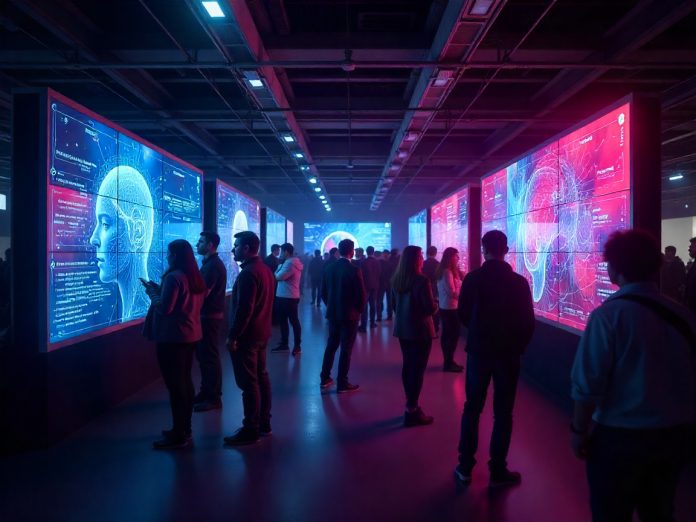For years, the primary role of Artificial Intelligence in business was analytical. AI was a powerful tool for finding patterns in data, predicting outcomes, and optimizing existing processes. It was incredibly valuable, but it operated in the background, largely as an assistant to human decision-makers.
Today, that paradigm is being shattered by two revolutionary advancements that are moving AI from a passive analyst to an active creator and a proactive doer: Generative AI and Agentic AI.
This is not just an incremental update; it is a seismic shift that is fundamentally redefining the nature of innovation itself. For businesses, understanding this new landscape is no longer optional, it is the key to future survival and growth. For professionals, it highlights the urgent need to upskill, with a high-quality generative AI course becoming a critical step for career relevance.
Phase 1: Generative AI – The Creative Co-Pilot
The first wave of this revolution, which has already taken the world by storm, is Generative AI. This is the technology that allows machines to create new, original content that was once the exclusive domain of human creativity. It can write code, compose music, design products, and generate photorealistic images from a simple text prompt.
In the context of business innovation, Generative AI acts as a powerful creative co-pilot, amplifying human capabilities in several key ways:
- Accelerating Ideation: Instead of a small team brainstorming in a conference room, a single product manager can now generate hundreds of product ideas, marketing slogans, or design concepts in minutes. This massively accelerates the creative process and widens the range of possibilities.
- Rapid Prototyping: A developer can use Generative AI to write boilerplate code, a designer can create mockups for a new app interface, and a marketer can draft multiple versions of ad copy. This allows for rapid, low-cost prototyping, enabling teams to test and iterate on ideas faster than ever before.
- Hyper-Personalization at Scale: Generative AI can create personalized email campaigns, custom-tailored product recommendations, and unique support interactions for millions of individual customers simultaneously, creating a level of personalized experience that was previously unimaginable.
Mastering the art of collaborating with these creative tools is a core focus of any modern generative AI course, teaching professionals how to effectively prompt, refine, and strategically deploy these models to drive business outcomes.
Phase 2: Agentic AI – The Autonomous Problem-Solver
If Generative AI is the creative co-pilot, then Agentic AI is the autonomous project manager. This is the next, even more powerful, wave of this transformation.
An AI Agent is a system that can take a high-level goal, independently break it down into a series of tasks, execute those tasks using various tools (like browsing the web, accessing a database, or writing code), and adapt its approach based on the results, all without constant human supervision.
Think of it this way:
- You ask Generative AI: “Write me an email to a potential client.”
- You ask Agentic AI: “Find me five potential clients in the manufacturing sector in Ohio, draft personalized outreach emails for each of them based on their company’s recent news, and schedule the emails to be sent tomorrow morning.”
The agent doesn’t just create; it acts. It orchestrates entire workflows. This has profound implications for business innovation:
- Automating Complex Workflows: An AI agent can conduct market research, analyze competitors’ pricing, adjust a company’s own ad spend, and generate a report on the results, all while the human team is sleeping. This automates not just simple tasks, but entire strategic processes.
- Proactive Opportunity Seeking: Agents can be programmed to constantly scan the market for new opportunities, such as a sudden shift in consumer sentiment or a new technology trend, and then proactively suggest or even initiate a strategic response.
- Building Self-Optimizing Systems: In areas like supply chain management, an AI agent can monitor weather patterns, shipping delays, and inventory levels, and then autonomously re-route shipments and adjust orders to prevent disruptions before they happen.
The ability to design, manage, and govern these autonomous systems is a highly advanced skill set. A forward-looking agentic AI course is designed to build this competency, preparing professionals to lead in a world where entire business functions can be automated.
The New Innovation Cycle: A Human-AI Partnership
The future of innovation is a powerful, symbiotic partnership between human leaders and intelligent AI systems. The new innovation cycle will look like this:
- Vision (Human): A human leader sets the strategic goal or identifies a complex problem to be solved.
- Ideation (Human + Generative AI): The leader collaborates with Generative AI to rapidly brainstorm and prototype a wide range of potential solutions.
- Execution (Agentic AI): The leader deploys an AI Agent to execute the chosen strategy, automating the complex series of tasks required to bring the solution to life.
- Oversight (Human): The human leader monitors the agent’s performance, provides ethical guidance, and makes the final strategic judgments.
Conclusion: Your Role in the New Era
The rise of Generative and Agentic AI is not a distant future; it is happening now. It is creating a new set of rules for how businesses innovate and compete. For professionals, waiting on the sidelines is not an option. The skills required to thrive in this new era are specialized and in high demand.
Investing in a comprehensive agentic AI course is the most direct way to prepare for this future. It equips you with the ability to move beyond simply using AI tools to strategically designing and deploy intelligent systems that can drive real business value. The future of innovation is here, and it belongs to those who learn to lead it.






